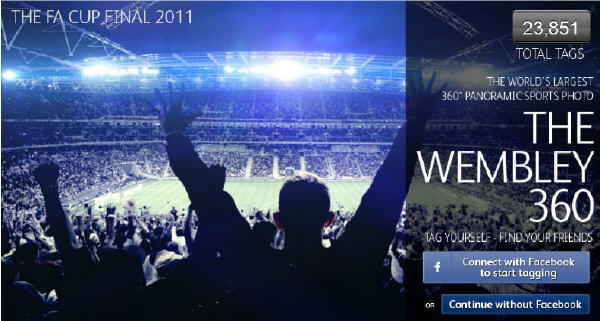Irish-owned Huggity, a new social media tagging application, will allow brands to engage with users and consumers at live events via platforms like Facebook, and has already been used by MTV.
Launched at this year’s World Street Performance Championships in Dublin and featured at MTV’s biggest party of the year in Malta last weekend, the technology behind Huggity allows brands and sponsors to engage directly with their audience at concerts, sporting events, festivals, trade shows and other public gatherings through social media platforms, with Facebook being the primary focus.
The application is based on a giant panoramic, high-resolution crowd image taken at a venue during an event.
Huggity then allows users to zoom into the crowd photo where they can spot themselves or their friends and subsequently tag their location in the arena or stadium, for example.
“Companies are actively trying to engage users on social media platforms, but in many instances, they make the mistake of not offering something the user is interested in,” Mike Sikorski, CEO of Huggity, explained.
“I think Huggity can reverse that trend. Once users find and tag themselves on our highly detailed image, they can share it with friends on Facebook, Twitter or via email. In all, it’s a very effective part of a social media engagement strategy for any brand.”
Technology first trialled at Glastonbury
The technology that powers Huggity was first showcased at Glastonbury 2010. More than 9,000 people attending the festival tagged themselves afterwards, generating in the region of 1.1m wall posts on Facebook.
Similarly, the software was demonstrated at Wembley Stadium, London, last year, and generated more than 23,000 tags via Facebook and more than 250,000 page views. This translates to more than 2.8m viewers, not only the panoramic image, but also the sponsor’s promotional message.
For sponsors, venues and brand managers, Huggity offers a post-event marketing tool aimed directly at an audience that has already engaged with them simply by attending an event. However, as the examples in the UK demonstrate, the technology offers sponsors and brands the opportunity to reach an audience far beyond those who attended the event.
The technology also allows brands and sponsors to continue the event experience long after the actual event itself and helps to build communities for brands so they can directly target fans that have already engaged with a specific product or brand.
